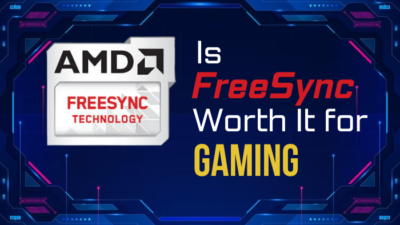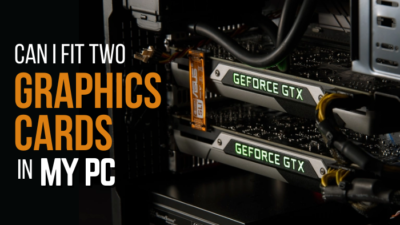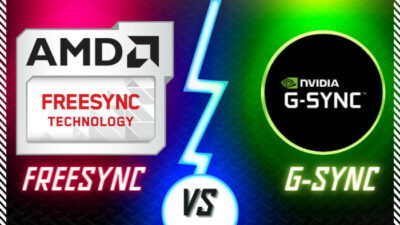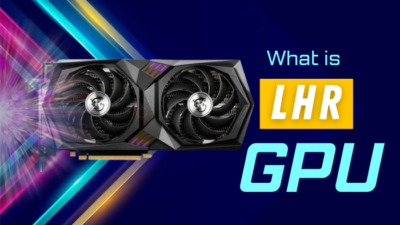A graphics card is essential in heavy gaming and is a must-have component for rendering, gaming, and doing graphics-intensive tasks.
While purchasing the most suitable graphics card, a ranking chart helps to make a comfortable choice. That’s where the GPU hierarchy comes in to ease your decision.
GPU hierarchy ranks all the graphics cards from top to bottom, and this article aims to provide the latest ranking with a tested benchmark.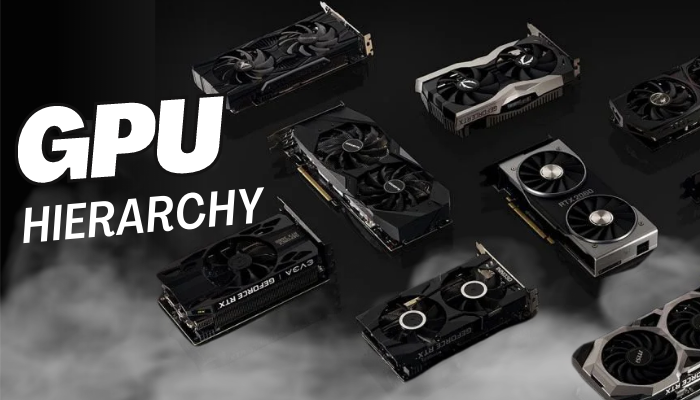
So, let’s begin.
Go through our epic guide about can you use AMD CPU with Nvidia GPU?
Graphics Card Hierarchy & Ranking Table 2023
Based on their synthetic and real-life benchmark, the graphics card hierarchy ranks all the past and present generation GPUs from high to low-end. The ranking relies on generational performance, architectural design, bit rate, VRAM, and other technologies.
NVIDIA and AMD have been in the GPU market race for years, with multiple generations and architectural differences. In 2022, Intel joined the race with its first-generation cards.
All this variety makes the ranking difficult, but creating a hierarchy is not impossible. The best way to rank the GPUs is to make a table depending on their performance and place them in the low to high-end categories.
We will use the following category for the hierarchy and position the present and past-gen graphics cards in them.
- S Tier
- A Tier
- B Tier
- C Tier
- D Tier
The tiers are measured with the synthetic performance of the GPU. We’ve used Geekbench, 3DMark, and PassMark G3D Mark to benchmark our graphics cards and rank them in categories.
S Tier
The S tier cards are the best in the graphics card market. They are made for the enthusiast and the most professional card for gamers, streamers, and for editing and rendering.
All the cards in this category support 4K resolution in games, and some top ones can give output in 8K resolution.
Nvidia has been dominating this tier for a long time, but now AMD is competing very well and targeting the top. Intel is rocking with the DLSS technology, and AMD is battling with its FSR 2.1 technology.
All these cards have more than 12 GB VRAM and are ample for running the most advanced AAA titles games and rendering complicated programs.
| No. | Graphics Card | PassMark G3D Mark | Geekbench Score | 3DMark Score |
|---|---|---|---|---|
| 1 | GeForce RTX 4090 | 39465 | 328381 | 44293 |
| 2 | GeForce RTX 4080 | 35403 | 245179 | 31431 |
| 3 | GeForce RTX 4070 Ti | 31620 | 209210 | 25382 |
| 4 | Radeon RX 7900 XTX | 31318 | 198808 | 34316 |
| 5 | GeForce RTX 3090 Ti | 29921 | 204878 | 24440 |
| 6 | Radeon RX 6950 XT | 29093 | 171847 | 25098 |
| 7 | Radeon RX 7900 XT | 28665 | 176029 | 29201 |
| 8 | GeForce RTX 3080 Ti | 27431 | 209081 | 22983 |
| 9 | GeForce RTX 3090 | 26906 | 196163 | 23886 |
| 10 | Radeon RX 6900 XT | 26891 | 160090 | 27486 |
| 11 | GeForce RTX 3080 12GB | 25408 | 175913 | 20046 |
| 12 | Radeon RX 6800 XT | 24846 | 158867 | 23611 |
A Tier
A tier cards are considered as high-end graphics cards and sit right below the S tier. These cards are most popular among gamers and streamers. They are well capable of running the games in 2K resolution efficiently.
Each card is built on GDDR6 with more than 8 GB of VRAM, and the Nvidia 30-series has GDDR6X for faster performance. The A-tier cards support ray tracing technology and can give a better visual experience in games.
The cards in this category are more affordable than the above tier and are considered better in some circumstances.
| No. | Graphics Card | PassMark G3D Mark | Geekbench Score | 3DMark Score |
|---|---|---|---|---|
| 13 | GeForce RTX 3070 Ti | 23791 | 139924 | 18501 |
| 14 | GeForce RTX 3070 | 22465 | 128425 | 15484 |
| 15 | Radeon RX 6800 | 22185 | 125046 | 17230 |
| 16 | GeForce RTX 2080 Ti | 21902 | 146249 | 18741 |
| 17 | Radeon RX 6750 XT | 21662 | 104682 | 13795 |
| 18 | GeForce RTX 3060 Ti | 20590 | 112357 | 13803 |
| 19 | Titan RTX | 19859 | 138072 | 15556 |
| 20 | Radeon RX 6700 XT | 19704 | 96800 | 14065 |
| 21 | GeForce RTX 2080 Super | 19572 | 120805 | 14774 |
| 22 | Radeon RX 6700 10 GB | 19218 | 89379 | 11477 |
| 23 | GeForce RTX 2080 | 18792 | 113757 | 11596 |
B Tier
The B tier graphics cards are more budget-friendly and ideal for the mid-range PC build. Like the above two tiers, some cards in this segment support ray tracing technology.
Nvidia 20-series, AMD 6000 series, and the newer Arc models have the first generation ray tracing technology. In addition, the best cards from the Nvidia 10-series and AMD 5000 series also appear in this range.
These cards were top-of-line once, but are now considered the mid-end graphics card after all these years. Even six years later, the cards run all modern games well.
| No. | Graphics Card | PassMark G3D Mark | Geekbench Score | 3DMark Score |
|---|---|---|---|---|
| 24 | GeForce GTX 1080 Ti | 18487 | 51749 | 11694 |
| 25 | GeForce RTX 2070 Super | 18241 | 104236 | 11727 |
| 26 | Radeon RX 6650 XT | 17835 | 83914 | 10546 |
| 27 | GeForce RTX 3060 | 17179 | 89627 | 10103 |
| 28 | Radeon RX 5700 XT | 16957 | 81074 | 11273 |
| 29 | Radeon VII | 16841 | 90438 | 9348 |
| 30 | GeForce RTX 2060 Super | 16609 | 90373 | 9272 |
| 31 | Radeon RX 6600 XT | 16378 | 81588 | 11673 |
| 32 | GeForce RTX 2070 | 16145 | 90205 | 10562 |
| 33 | GeForce GTX 1080 | 15446 | 46494 | 8881 |
| 34 | Radeon RX 6600 | 15032 | 70854 | 9202 |
| 35 | Radeon RX 5700 | 14702 | 66787 | 8799 |
| 36 | GeForce GTX 1070 Ti | 14688 | 44082 | 8799 |
| 37 | Radeon RX Vega 64 | 14647 | 51734 | 8402 |
| 38 | GeForce RTX 2060 | 14074 | 75941 | 8374 |
| 39 | Radeon RX 5600 XT | 13817 | 65299 | 7946 |
| 40 | Radeon RX Vega 56 | 13631 | 55927 | 7434 |
| 41 | GeForce GTX 1070 | 13525 | 40889 | 7448 |
| 42 | GeForce GTX 1660 Ti | 12921 | 66621 | 6572 |
| 43 | GeForce RTX 3050 | 12875 | 65596 | 6901 |
| 44 | GeForce GTX 1660 Super | 12801 | 64316 | 6406 |
| 45 | Intel Arc A770 16 GB | 8707 | 108285 | 14648 |
| 46 | Intel Arc A750 | 8476 | 95831 | 13496 |
C Tier
With the introduction of latest generation cards and vast choice in the market, the lower mid-end graphics card has made its place. That’s where the C-tier card snoops in.
Every card may not be able to deliver a result in 1440p, but you can play games easily at the 1080p resolution. These cards suit the budget and are good for average and day-to-day usage.
These cards are the best choice if you are looking for an optimal card for a low budget.
| No. | Graphics Card | PassMark G3D Mark | Geekbench Score | 3DMark Score |
|---|---|---|---|---|
| 47 | GeForce GTX 980 Ti | 13875 | 33812 | 6717 |
| 48 | GeForce GTX 1660 | 11748 | 59389 | 5542 |
| 49 | GeForce GTX 980 | 11162 | 27638 | 5416 |
| 50 | GeForce GTX 1650 Super | 10092 | 55402 | 4730 |
| 51 | GeForce GTX 1060 6 GB | 10068 | 31244 | 4981 |
| 52 | Radeon R9 Fury X | 10056 | 54590 | 5161 |
| 53 | GeForce GTX 1060 3 GB | 9729 | 29592 | 4444 |
| 54 | GeForce GTX 970 | 9634 | 24013 | 4672 |
| 55 | Radeon RX 590 | 9614 | 11950 | 4737 |
| 56 | Radeon RX 6500 XT | 9464 | 49837 | 5059 |
| 57 | Radeon RX 5500 XT 8 GB | 9213 | 44823 | 4915 |
| 58 | Radeon R9 390 | 9065 | 45446 | 3879 |
| 59 | Radeon RX 580 8 GB | 8925 | 44141 | 4602 |
| 60 | Radeon RX 570 4 GB | 8094 | 37824 | 3890 |
| 61 | GeForce GTX 1650 GDDR6 | 7837 | 39862 | 3885 |
D Tier
The D tier of the entry-level graphics card market is very challenging. The differences between the two cards are very minimal.
However, some cards, especially the latest Intel Arc A380, stand at the top with brilliant ray tracing ability. Also, the AMD Radeon card performs very well according to the price and performance ratio.
| No. | Graphics Card | PassMark G3D Mark | Geekbench Score | 3DMark Score |
|---|---|---|---|---|
| 62 | Radeon RX 6400 | 7361 | 32805 | 3655 |
| 63 | Intel Arc A380 | 3655 | 34632 | 4798 |
| 64 | GeForce GTX 780 | 8032 | 21051 | 2870 |
| 65 | GeForce GTX 1050 Ti | 6295 | 19627 | 2322 |
| 67 | GeForce GTX 1050 | 5048 | 16410 | 1823 |
| 68 | GeForce GTX 1630 | 5006 | 24874 | 2101 |
| 69 | Radeon RX 560 4 GB | 3628 | 20061 | 1891 |
The primary purpose of the above tables is to categorize all the past and present generation graphics cards to give you a better idea. We’ve taken the synthetic benchmark to place them in a tier. But, the synthetic performance doesn’t provide the actual ability every time.
Sometimes the card faces driver issues, which affects the benchmarking score.
For example, the Intel Arc series is still very new, and the drivers aren’t stable yet. As a result, the performance graph varies a lot in different test benches.
On the other hand, Intel and AMD have provided steady benchmark scores in most of our tests because of their experience in drivers and architecture.
But primarily, real-time benchmarks are the most suitable and ideal for measuring the graphics card performance and comparing them with others.
The following passage will provide the gaming benchmark and hierarchy based on the graphics card ability.
Read more on what does Ti Stand for in GPU?
GPU Benchmark Hierarchy & Comparison
The graphics card hierarchy is based on the real-life gaming benchmark of different GPUs at different generations. The performance is measured in frame per second and runs multiple games at 1080p, 1440p, and 4K in medium and ultra settings.
We’ve used the Intel i9-13900K, 32 GB ram for our test rig, and paired them with individual graphics cards.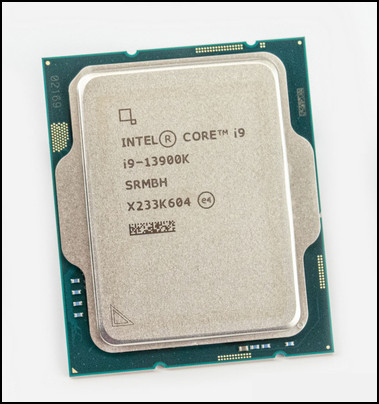
GPUs are more important than CPU for gaming. In our benchmark, we’ve used graphics cards from the latest Nvidia 4000, AMD 7000, and Intel Arc series to AMD Polaris and Nvidia Kepler series.
We tested eight different games and averaged them for the benchmark scoring. The game lists are Borderlands 3, Far Cry 6, Microsoft Flight Simulator, Forza Horizon 5, Horizon Zero Dawn, Red Dead Redemption 2, Total War Warhammer 3, and Watch Dogs Legion.
Check the following chart for the hierarchy and benchmark results of graphics cards:
In the above benchmark, the best graphics card from Nvidia, the RTX 4090, came at the top in 2K and 4K game performance. It’s also the best in the 1080p Ultra but slightly behind the AMD GPUs in 1080p Medium settings.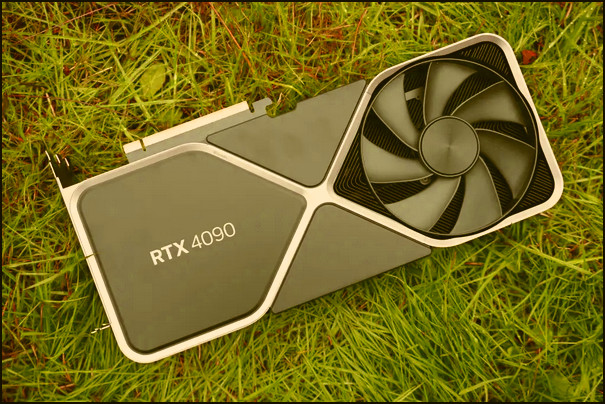
By averaging all the scores, the RTX 4090 is the best among all the graphics cards in the market. It’s a powerful card for gaming, rendering, and all the creative tasks.
The AMD 7000 series graphics card, Radeon RX 7900 XTX, is slightly behind the RTX 4090 in 1080p and 1440p. It’s 4% behind in 1080p Medium, 5% in 1080p Ultra, and 9% in 1440p than 4090. However, in 4K gaming, the difference is around 22%.
We’ve seen better performance in the newer generations compared to the previous. But, not all graphics cards can run all games in 2K and 4K resolution.
Especially, the Turing and older cards aren’t competent for 4K games. And the 2K resolution is unsupported by Pascal and Polaris.
The generational performance gap in newer graphics cards is more significant than the older ones. For example, the RTX 4090 is 12% faster in 1080p than the RTX 3090 Ti, 23% faster in 1440p, and 48% faster in 4K resolution.
All the latest gen Nvidia 40-series and AMD 7000 series rocks in large-scale gaming at maximum settings.
Compared to them, the Nvidia 3000 and AMD 6000 series aren’t that great, but perform reasonably well and are better valued for the average user. In addition, the Arc 770 & 750 is a perfect card considering the first gen card of Intel.
In this current generation, the benchmark of the GTX 16-series graphics card from Turing, Vega, Polaris, Pascal, Legacy, and Kepler looks gloomy in front of the top-line GPUs.
But some cards from the previous generation perform really well and can compete with the new-gen GPUs. For example, the RTX 2080 Ti can beat the RTX 3060 Ti in the frame rates.
After coming to the Polaris, Pascal, and Legacy cards, the benchmark score isn’t satisfying. However, the GPUs in the lower rank do manage to run some tests in 1080p Medium and Ultra preset, but the results aren’t good for handling new AAA-titled games.
All the above tests were done by turning off the ray tracing technologies to measure the performance on the same scale.
Now coming to the benchmark with ray tracing, we had to exclude some graphics cards as all the GPUs don’t have the ray tracing technology. The RTX series from Nvidia, the 6000 & 7000 series from AMD, and the Intel Arc can only enable the ray tracing ability.
Enabling the RTX in the Nvidia GPU gives a better visualization in gaming, and all the RTX-series graphics cards perform better than the same generation, and sometimes the next gen AMD GPUs.
The performance of the Nvidia Ada Lovelace and Ampere architecture shattered the AMD GPUs regarding the ray tracing benchmark.
Nvidia 4000 and 3000 series is well ahead of the latest AMD 7900 XTX at 1080p, 1440p, and 4K with ray tracing. And not to mention, the RTX 4090 has shown its place in the GPU ray tracing hierarchy once again.
The RTX 4090 has provided 40%-50% better FPS than the RTX 3090 Ti at 1080p, 63% better in 1440p, and 72% better in 4K.
The comparison is even more significant with the AMD Radeon 7900 XTX. The 4090 is 80% better in 1080p Ultra, 93% at 1440p, and 2x better at 4K resolution.
Deep Learning Super Sampling or DLSS plays an essential factor in the performance and can boost the Nvidia graphics card’s performance in ray tracing. In contrast, AMD provides FidelityFX Super Resolution to FSR 2.1 to their GPUs.
But the overwhelming defeat of AMD isn’t very surprising. They focus more on improving rasterization performance than the ray tracing technology. As a result, the card price is staying low but failing to provide competition in ray tracing performance.
Ray tracing in 4K is still a new thing, and most of the GPUs can’t handle the load. Only the best cards from the Nvidia 40-series, 30-series, and AMD 7000 & 6000 series support ray tracing in 4K resolution.
All the lower-level cards support up to 2K resolution with ray tracing and provide decent performance.
The latest gen Intel Arc Alchemist 770 graphics card performs similarly to the entry-level Ampere, RDNA 2, and Turing graphics cards. However, the 1440p resolution isn’t very promising in these cards.
The entry-level cards in each architecture, for example, the RTX 3050 from Ampere, RX 6650 XT and lower from RDNA 2, and RTX 2060 from the Turning, only support the ray tracing at 1080p Medium and Ultra preset.
Unfortunately, the latest gen Intel Arc A380 can only run the ray tracing at 1080p Medium settings in our tested games.
After trying various games and benchmarking all the graphics cards, the Nvidia RTX 4090 comes at the top of the graphics card hierarchy. And the AMD Radeon RX 7900 XTX comes right after it.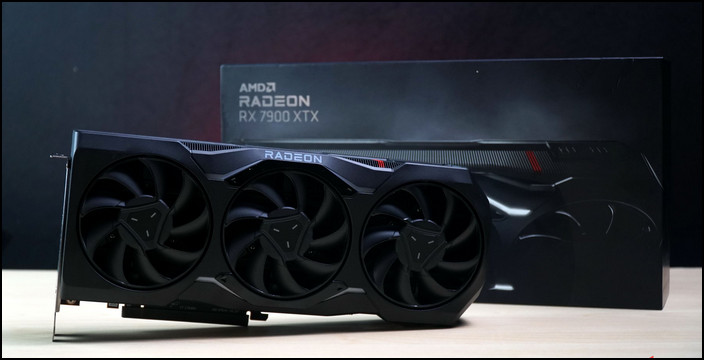
The other high-end Nvidia 40 & 30-series and AMD 7000 & 6000-series follow the hierarchy and stay on top of the older-gen cards.
The best card from the previous generation outperforms the current generation’s mid or low-end cards, and the hierarchy continues like that till the end.
Undoubtedly, the very first graphics cards of the Kepler and Legacy series come at the end of the graphics card hierarchy and performance.
On the other hand, the Nvidia graphics card comes at the top and performs way better compared to the same-generation AMD GPUs.
Follow our guide about the confusion of Ti vs. Non-Ti GPU.
Frequently Asked Questions
Which is the best graphics card in the market?
The Nvidia RTX 4090 is the most powerful and the best among all the graphics cards from every generation.
Which series supports ray tracing technology?
The Nvidia RTX 2000, 3000 & 4000 series, AMD 6000 & 7000 series, and Intel Arc series support ray tracing technology.
Do DLSS and FSR help in FPS?
Yes, the DLSS technology from Nvidia and FSR from AMD helps to upscale the video quality and boost the frame rate.
Wrapping Up
From the introduction of modern desktop graphics cards, every new GPU falls somewhere in the hierarchy.
The new generation Ada Lovelace RTX 4090 and RDNA 3 architectural AMD Radeon RX 7900 XTX is on top of the hierarchy, and the rest of the GPU comes behind them.
The GPU benchmark and ranking will help to choose the perfect graphics card. And if you find the article beneficial, don’t forget to share your thoughts in the comment box below.
Cheers!

